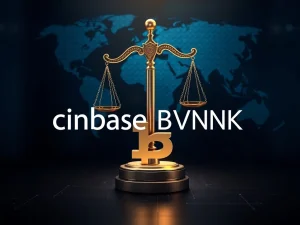Breakthrough: Circle CEO Predicts ‘iPhone Moment’ for Stablecoins

Imagine a moment when a technology becomes so intuitive and powerful that developers flock to build on it, much like they did with the iPhone. Circle CEO Jeremy Allaire believes stablecoins are on the verge of such a breakthrough, potentially reshaping the future of finance and driving significant crypto adoption.
What the Circle CEO Says About Stablecoins
Jeremy Allaire, the head of Circle, the company behind the USDC stablecoin, recently shared his perspective on the future of stablecoins. Following Circle’s public debut on the New York Stock Exchange, Allaire stated that the moment when developers widely recognize the potential of programmable digital dollars is fast approaching. He compared this potential developer interest to the impact the iPhone had on mobile development.
Allaire described stablecoins as “the highest utility form of money ever created,” emphasizing their potential as a foundational technology for future financial applications.
Driving Crypto Adoption Through Programmable Digital Dollars
The concept of programmable digital dollars is gaining traction. A16z Crypto partner Sam Broner highlighted that stablecoins foster competition in the fintech space by lowering the costs for building financial services. This increased competition can lead to better services, prices, and access for users, potentially accelerating crypto adoption.
A16z Crypto data scientist Daren Matsuoka echoed this sentiment, suggesting that stablecoins represent the “first credible opportunity to onboard a billion people into crypto.” This view underscores the belief that the stability and programmability of digital dollars make them a more accessible entry point into the broader crypto ecosystem compared to volatile assets.
Stablecoin Volume Surpasses Traditional Payment Systems
One compelling indicator of stablecoins’ growing importance is their transaction volume. Matsuoka pointed to the remarkable $33 trillion in stablecoin volume recorded over the past year. This figure is significantly higher than established payment systems.
Comparing the numbers:
- Stablecoin volume (past 12 months): ~$33 trillion
- PayPal volume (past 12 months): ~$1.7 trillion
This means stablecoin volume is roughly 20 times that of PayPal. Matsuoka also noted it’s close to 3 times the volume of Visa and is quickly approaching the volume handled by the ACH network in the US. This high volume suggests significant utility and usage, even if not all of it is retail-driven.
Real-World Examples and Industry Moves
Evidence of growing interest in digital dollars extends to major companies. Reports indicate that retail giants Walmart and Amazon are exploring the possibility of launching their own dollar-backed stablecoins for customer use. Furthermore, e-commerce platform Shopify recently announced plans to integrate Circle’s USDC stablecoin for payments by the end of 2025.
These moves by large corporations signal a potential shift towards accepting and utilizing stablecoins in mainstream commerce, which could significantly boost crypto adoption among a wider audience.
Circle’s NYSE Debut and Market Landscape
Circle’s recent listing on the New York Stock Exchange marks a significant step for a major stablecoin issuer. The company’s shares saw a strong performance on their first trading day. This public listing could bring increased visibility and regulatory scrutiny to the stablecoin sector.
In contrast, Circle’s main competitor, Tether, issuer of USDT, has stated it has no current plans to go public. This difference in strategy highlights varying approaches among leading stablecoin providers regarding transparency and market positioning.
Conclusion: The Path to the iPhone Moment
The insights from the Circle CEO, coupled with impressive stablecoin volume data and increasing interest from retail and e-commerce giants, paint a picture of a technology on the cusp of broader acceptance. While the true “iPhone moment” for stablecoins and digital dollars may still be ahead, the groundwork is being laid for these programmable assets to become a fundamental part of the digital economy, potentially driving mass crypto adoption in the coming years.







